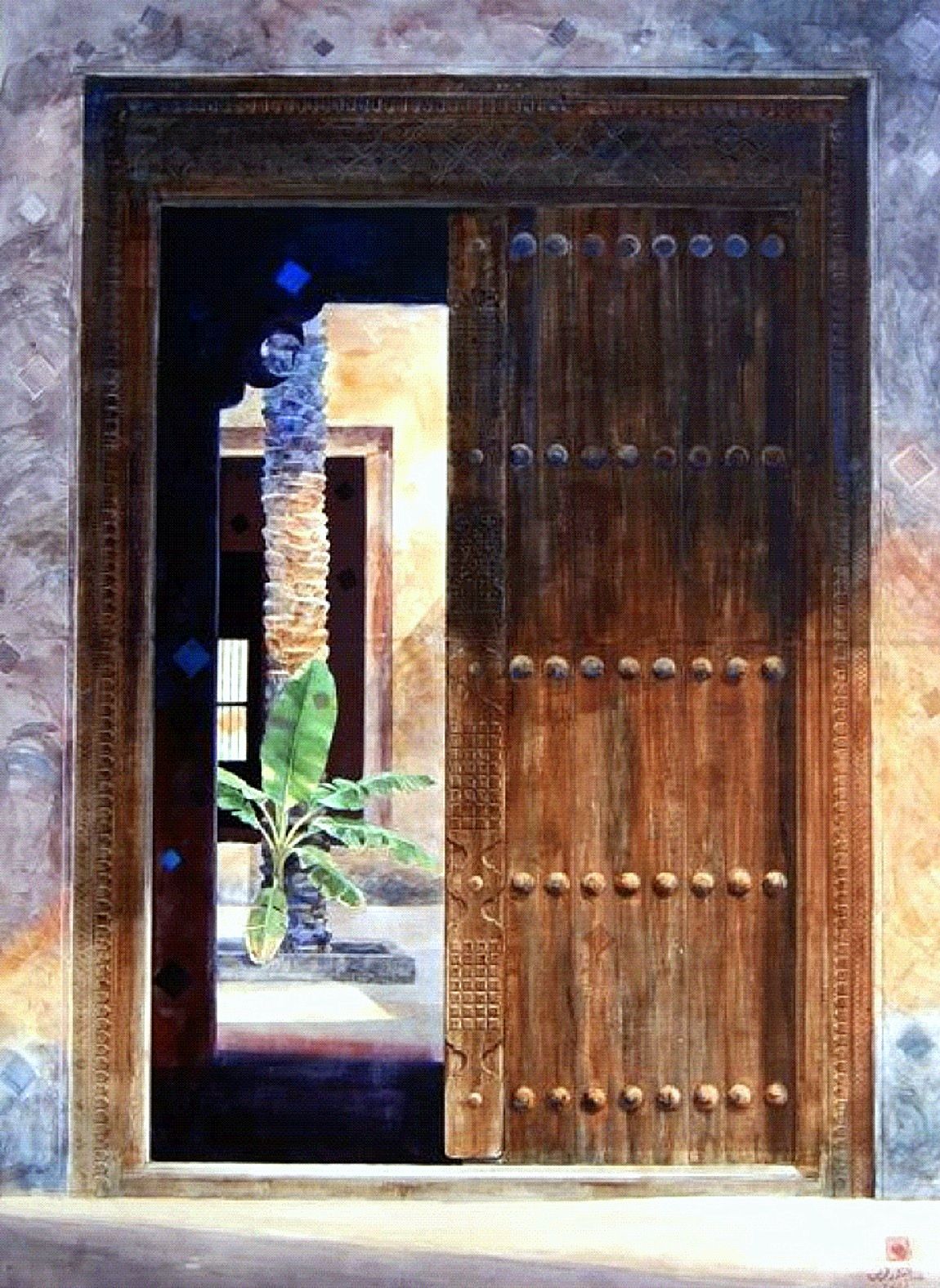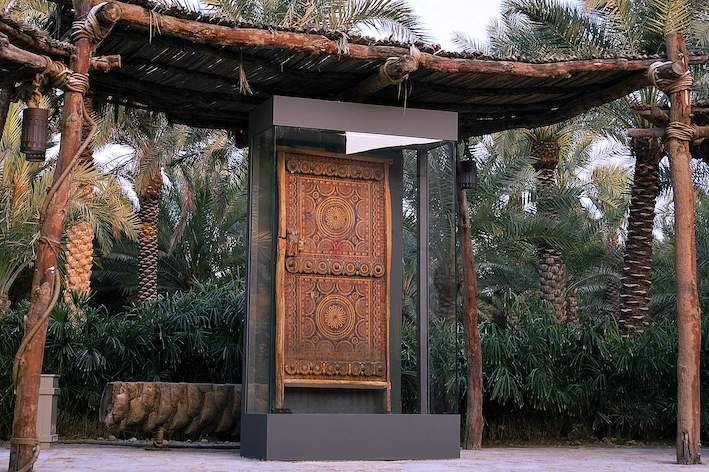The Doors that Impressed Michelangelo
The Florence Baptistery. Courtesy of Opera di Santa Maria del Fiore. Photo by Antonio Quattrone.
Doors and gates are more than just dignified objects that separate the inside from the outside; they protect our privacy, keep us safe, and provide a way in and out — they are the first and the last thing one sees as one leaves or arrives at a premise.
Doors are gateways to various possibilities, but very few doors in the world evoke such grandeur, such a deep sense of faith and majesty, as the doors of the Baptistery of Florence.
Known as the Gates of Paradise, the North and South doors — built in the 14th and 15th centuries — are doors of gold and bronze heavy in weight (and even heavier in history), with intricate stories along its panels that evoke a strong divine presence in their viewers.
The Gates of Paradise are said to have been bestowed their title by one of history’s greatest artists. “They’re so beautiful they would grace the entrance to paradise,” said the legendary Michelangelo.
Dignified in their resilience and revival, these doors are stationed at places of worship.
“The three sets of monumental bronze doors exhibited in the Museo dell'Opera del Duomo of Florence are the most famous examples of a kind of European artwork once considered of great importance,” said Timothy Verdon, the Director of The Museo dell'Opera del Duomo in an exclusive interview with Rym Al-Ghazal.
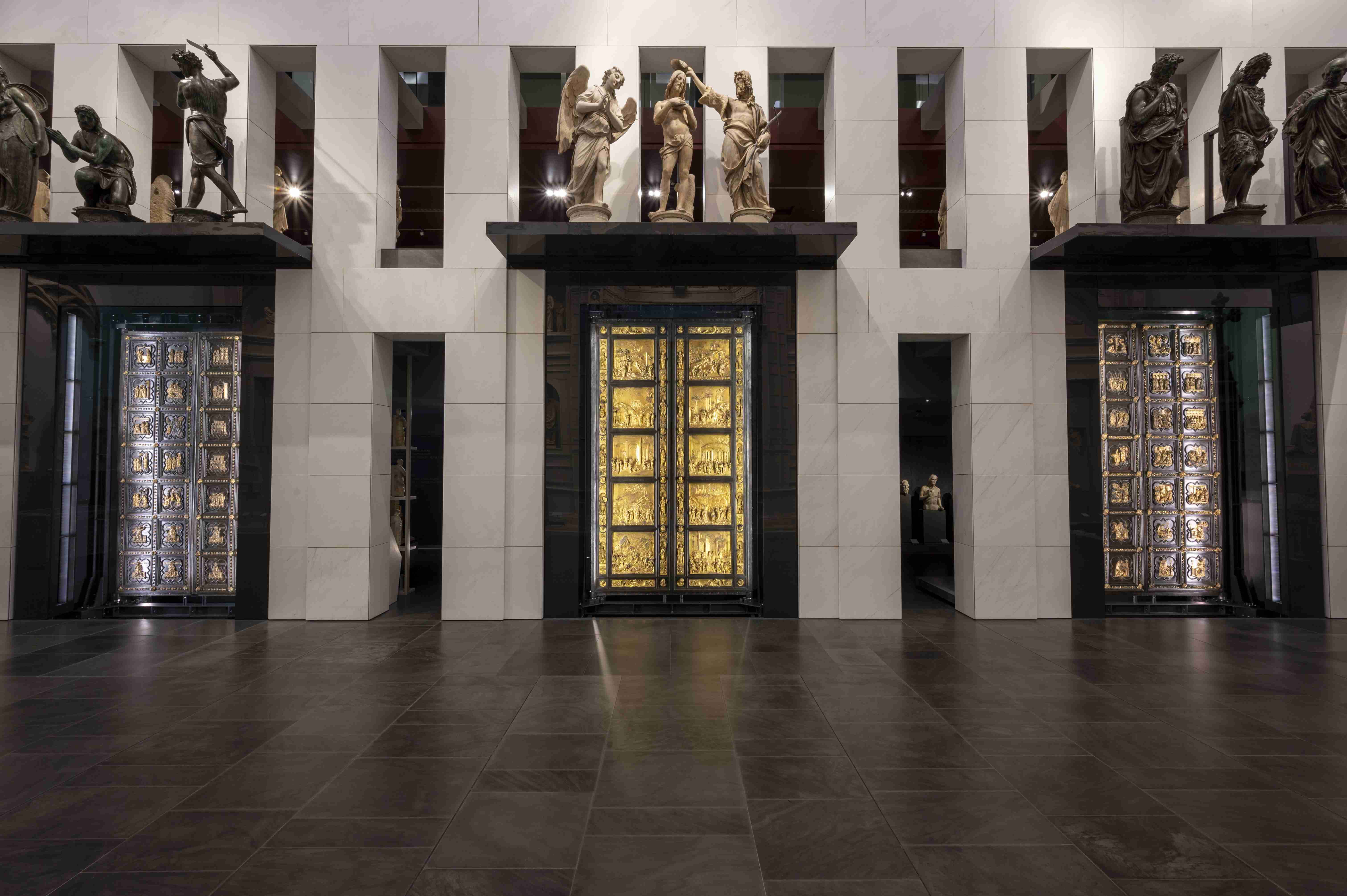
The three monumental Doors of the Florence Baptistery by Andrea Pisano and Lorenzo Ghiberti in Museo dell’Opera del Duomo’s Paradise room, Florence (Italy); Courtesy of Opera di Santa Maria del Fiore. Photo by Claudio Giovannini.
The Italian sculptor Lorenzo Ghiberti took 27 years —between 1425 and 1452— to make ‘The Gates of Paradise’ in bronze and gold. They are historiated — where they recount, in ten relief panels that narrate scenes from the Old Testament.
The Gates of Paradise— eight tons in weight, 5.20 meters tall, 3.10 meters wide, 11 cm thick - was the creation of Lorenzo Ghiberti. He was assisted over the years by numerous high-caliber collaborators such as Donatello, Michelozzo, Luca della Robbia, Benozzo Gozzoli, and Bernardo Cennini.
It was so beautiful that it was put in a place of honor at the east entrance facing the Cathedral, the Paradisium.

The Gates of Paradise. Baptistery of Florence, Lorenzo Ghiberti, 1425- 1452, bronze and gold. Courtesy Opera di Santa Maria del Fiore, photo Antonio Quattrone.
The North Gate and Gates of Paradise were created by Ghiberti, and the South Gate by Pisano.
“All three were made for the Baptistery of Florence, located in front of the Cathedral: the building where, in former times, all the city's Christian children received the sign of the religious faith in which they would be raised, the Christian sacrament of Baptism. All three doors illustrate stories basic to understanding faith: St John the Baptist's life, Christ's life, and the Old Testament's great events. Since the building where they were mounted was symbolic in its function, indicating spiritual rebirth and heavenly citizenship, the doors were like 'constitutional documents' telling all who entered what it means to be a Christian,” he said.
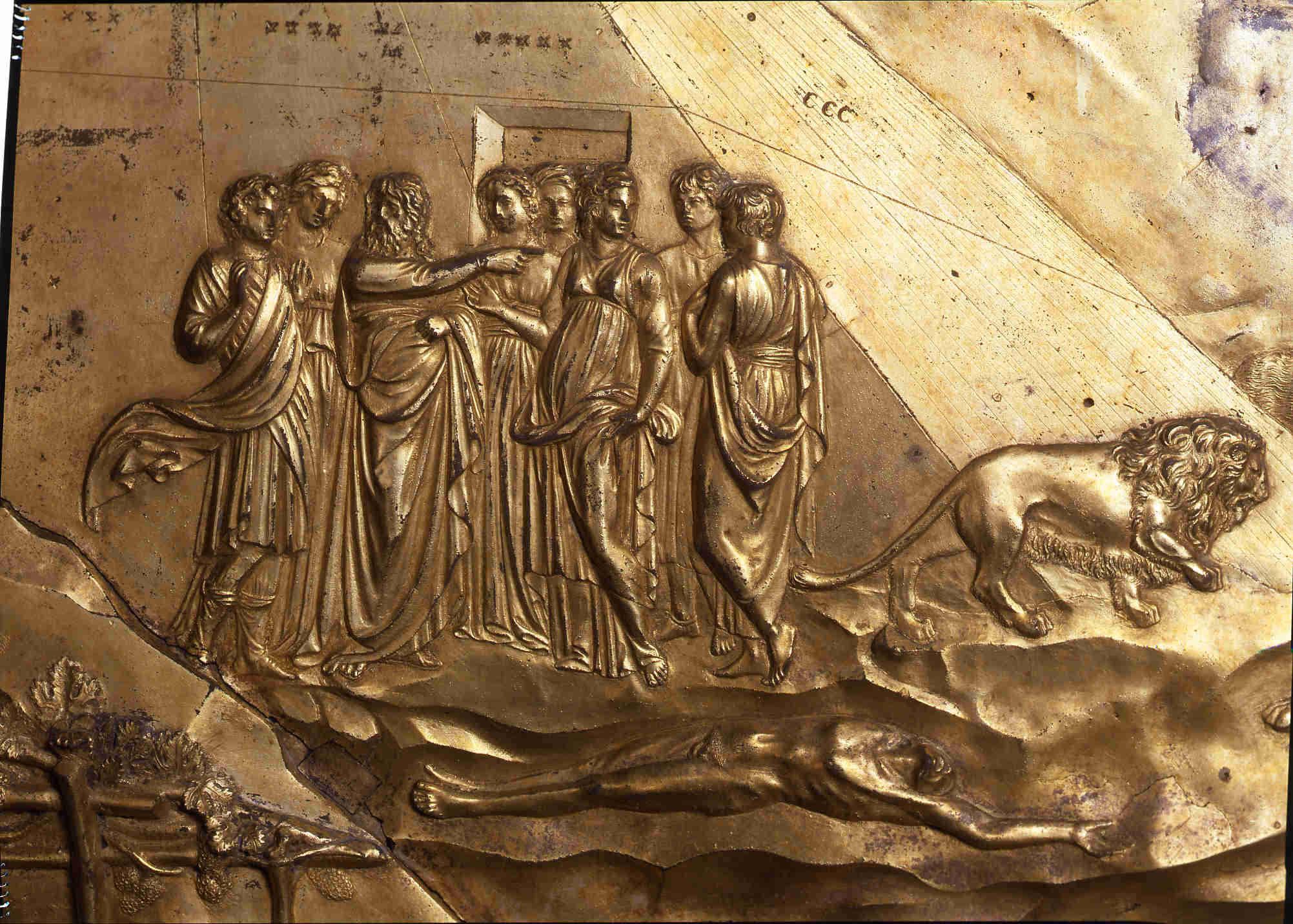
Gates of Paradise. Particular of the tile with Stories of Noah. Courtesy of Opera di Santa Maria del Fiore. Photo by Antonio Quattrone.
From stories of creation to the stories of the life of Christ, Adam and Eve, St. John the Baptist, and Noah — includes animals like the elephant, lion, and deer and birds like the falcon —, Moses, Abraham, Joshua, Joseph, and Solomon, and others — each tile captivates as it takes a viewer on a journey of the past and of the self.
“Their artistic beauty was in the service of this inner beauty, and their message became part of people's lives. As the children, baptized as infants, grew, parents brought them many times to 'read' the stories on the doors and thus learn about their faith and about themselves. The doors were components of the individual and collective identity of Florentines,” he said.

Gates of Paradise. Tile with Stories of Moses. Courtesy of Opera di Santa Maria del Fiore. Photo by Antonio Quattrone.
Following a meticulous restoration work of unprecedented complexity over 27 years, the public can admire and rediscover the Gates of Paradise at the Museo dell'Opera del Duomo. On September 8, 2012, the Gates of Paradise went back on public display after a meticulous and complex restoration project that saved the famous gilding, which was directed and carried out by the Opificio delle Pietre Dure in Florence. Commissioned by the Opera di Santa Maria del Fiore, it was made possible thanks to funding from the Ministry of Heritage and Cultural Affairs and the contribution of the association of Friends of Florence.
Continuing their mission to preserve and protect, the Opera di Santa Maria del Fiore in the following years, until 2019, commissioned and financed the restoration of the North and South Doors.
The story of the doors in modern history is one of adventurous and innovative explorations — where various dedicated, creative solutions had to be taken to revive and protect the doors until they were brought back to the public to cherish.

Gates of Paradise. Particular of the tile stories of Solomon. Courtesy of Opera di Santa Maria del Fiore.
The doors were not removed from their original location until 1943 when they were taken down and stored in a safe place because of the Second World War. They returned to the Baptistery in 1948, following restoration work carried out by Bruno Bearzi. This brought to light the mercury gilding that, for centuries, had been hidden beneath dirt and a layer of black paint applied in 1772, which had led people to forget about the existence of the legendary gilding on the reliefs. Having survived the war, the doors were then damaged by a flood in 1966. They then underwent a series of restorations — including the use of a special laser to clean the reliefs — until they reached the public again.
“In today's multicultural society, the same intensity of personal and communitarian reception is much more difficult. The doors have become 'mere' masterpieces whose meaning is either not understood or not accepted,” said Mr Verdon.
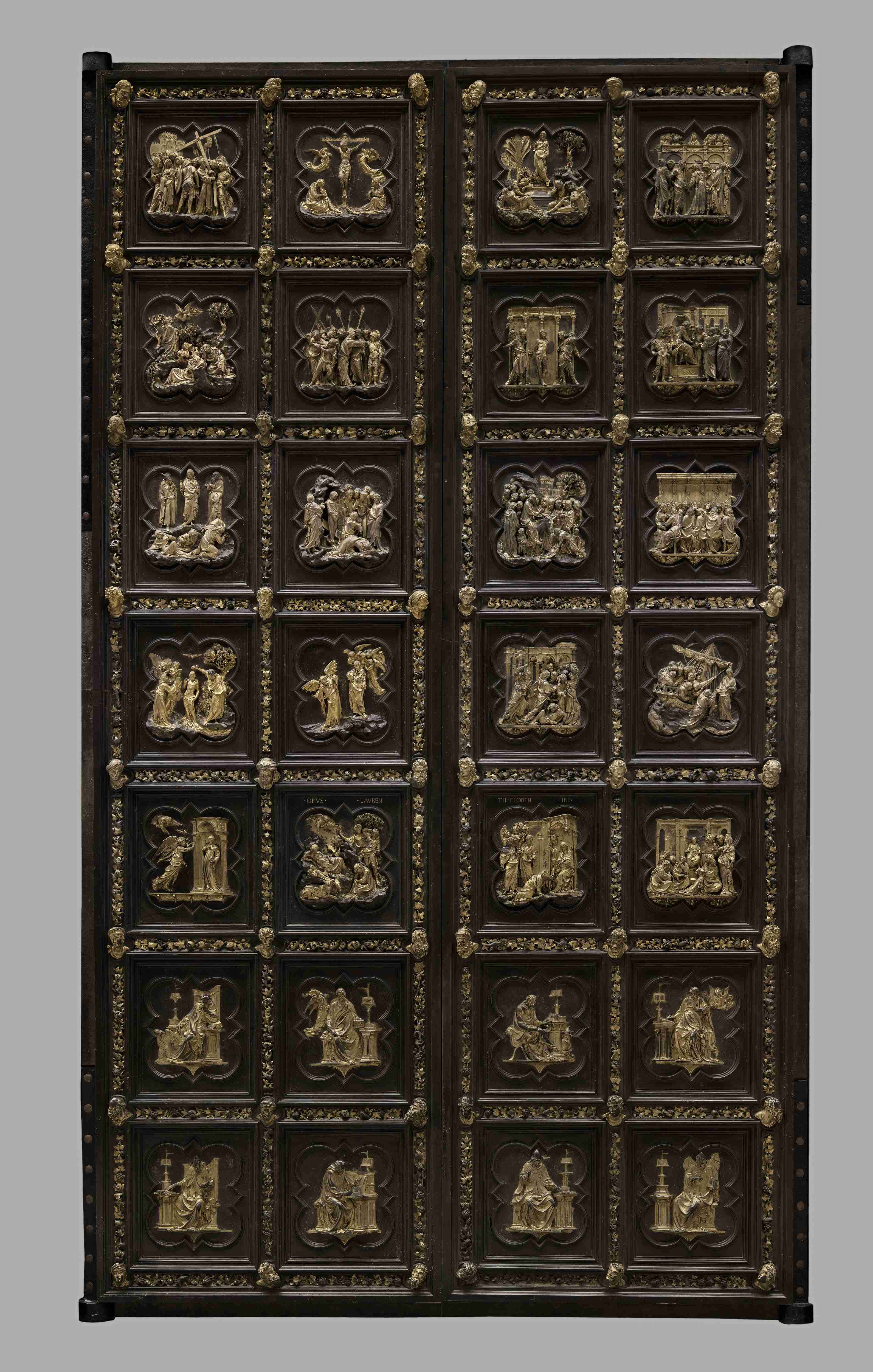
The North Door of Florence Baptistery. It includes the Annunciation, the Adoration of the Magi, Jesus walking on the water, the last supper and Crucifixion. Courtesy of Opera di Santa Maria del Fiore. Photo by Antonio Quattrone.
“In a broader sense, images generally - even very beautiful ones by great masters - no longer touch people like in the past: television and the internet have saturated our imagination, and publicity has made us less trusting. In our technological age, symbolism of all kinds, while fascinating, tends not to shape our lives as once it did,” he said.
Mr Verdon concluded: “This is a form of moral impoverishment, for human beings need symbols and stories in which they can believe. Artworks like the three Florentine bronze doors can help visitors rediscover, for a moment and perhaps only vicariously, the joy of faith.”
With the amount of dedicated work and study put into these beautiful doors, it was quite an honor to be in their presence and their guardians, like Mr Verdon.

Andrea Pisano's South Door. It includes the Visitation, Saint John’s story and the dance of Salome. Courtesy of Opera di Santa Maria del Fiore. Photo by Antonio Quattrone.
To visit the doors, please check here.
More about The Opera di Santa Maria del Fiore: It was founded by the Florentine Republic in 1296 with the participation of the city’s ecclesiastical authorities to oversee the construction of the new Cathedral and its Bell Tower. Once the church was consecrated on March 25, 1436 and its architectural structure was complete, Opera’s primary task became the conservation and embellishment of its monumental complex. The Baptistery of San Giovanni came under its jurisdiction in 1777, and the Opera del Duomo Museum was inaugurated in 1891.
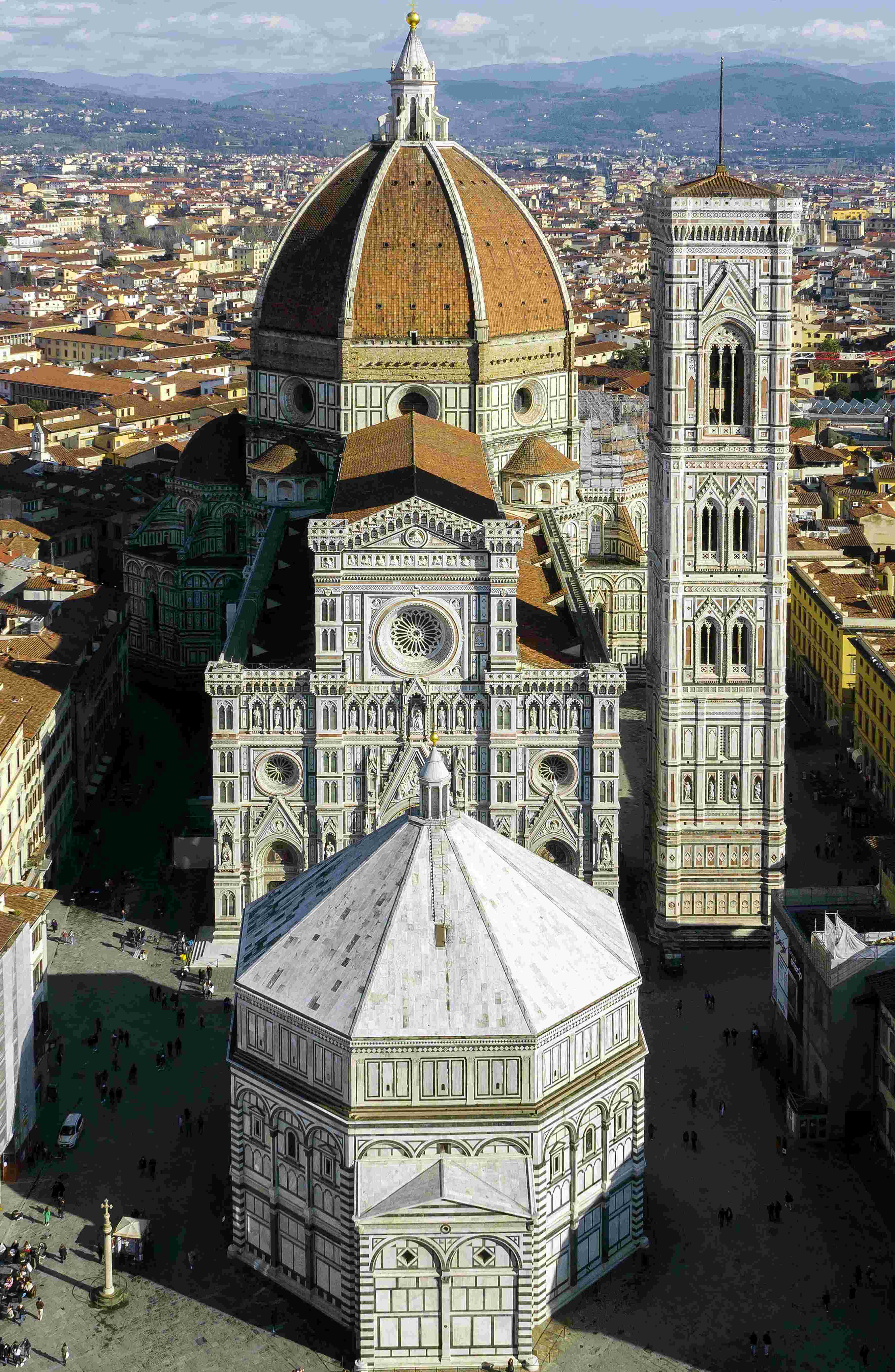
Cathedral and Baptistery of Florence. Courtesy of Opera di Santa Maria del Fiore. Photo by Fabio Muzzi.
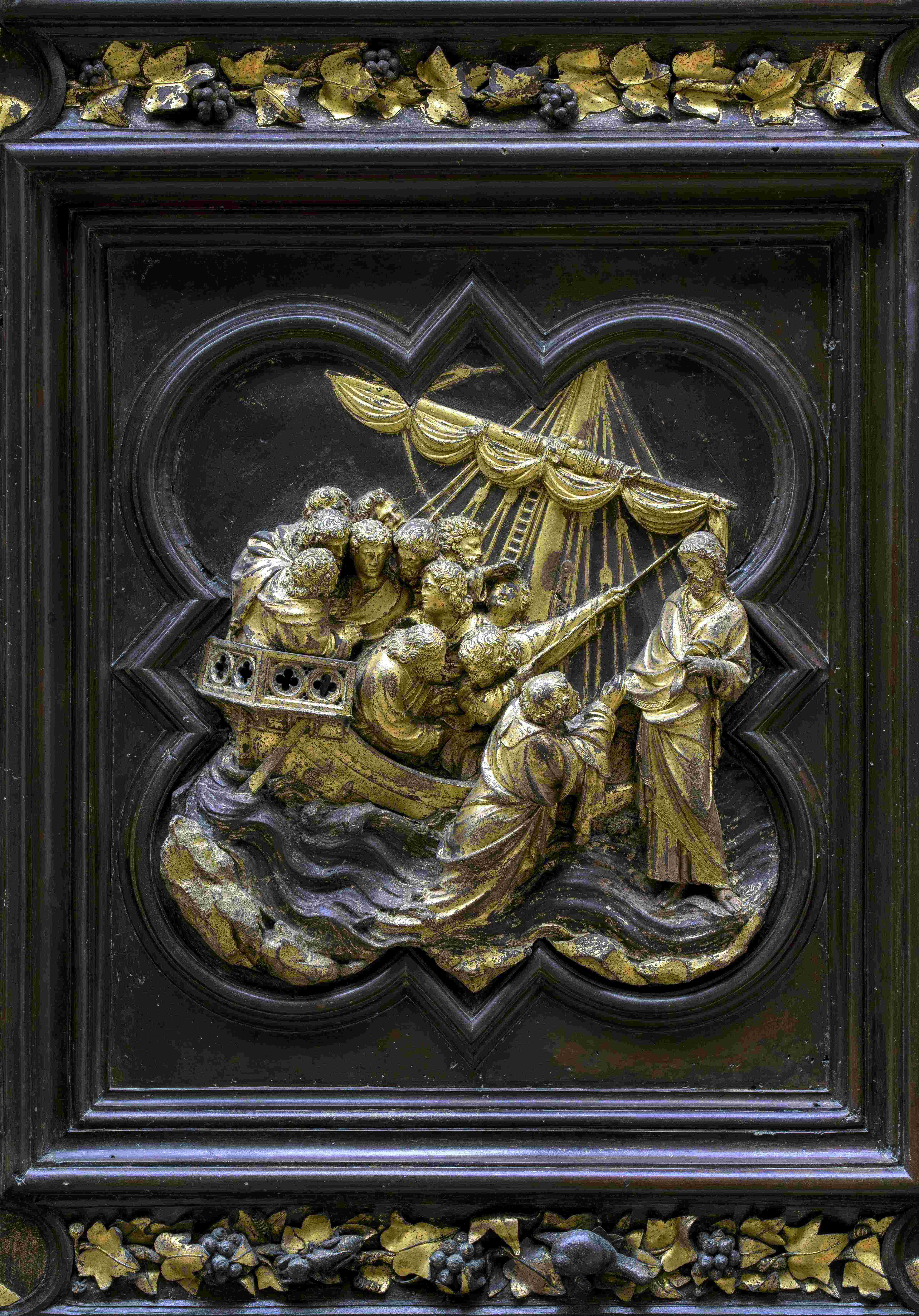
The North Door of Florence Baptistery, tile with Jesus walking on the water. Courtesy of Opera di Santa Maria del Fiore. Photo by Antonio Quattrone.

Andrea Pisano’s South Door, right door, Dance of Salome. Courtesy of Opera di Santa Maria del Fiore. Photo by Antonio Quattrone.
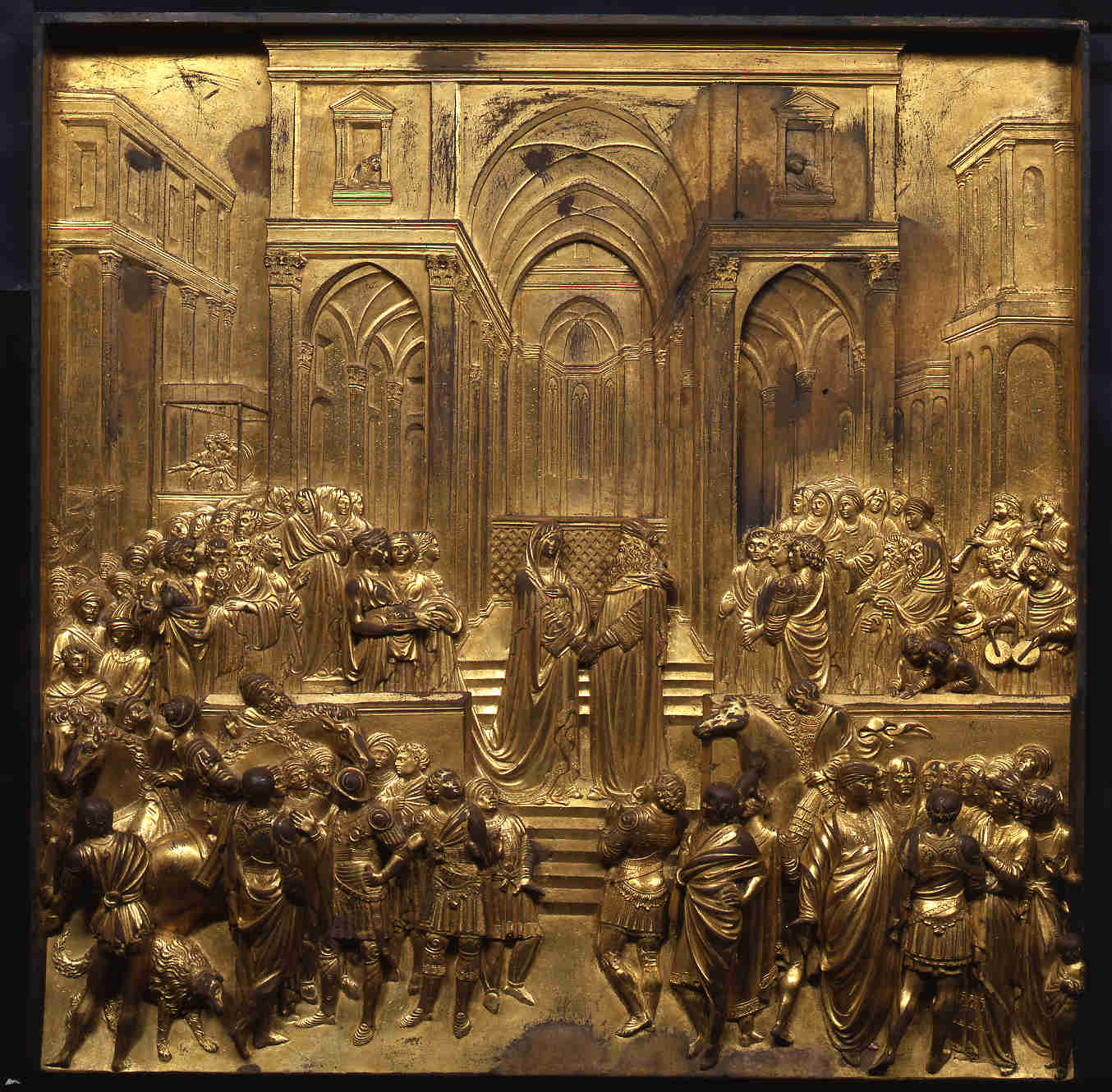
Gates of Paradise. Particular of the tile stories of Solomon. Courtesy of Opera di Santa Maria del Fiore.
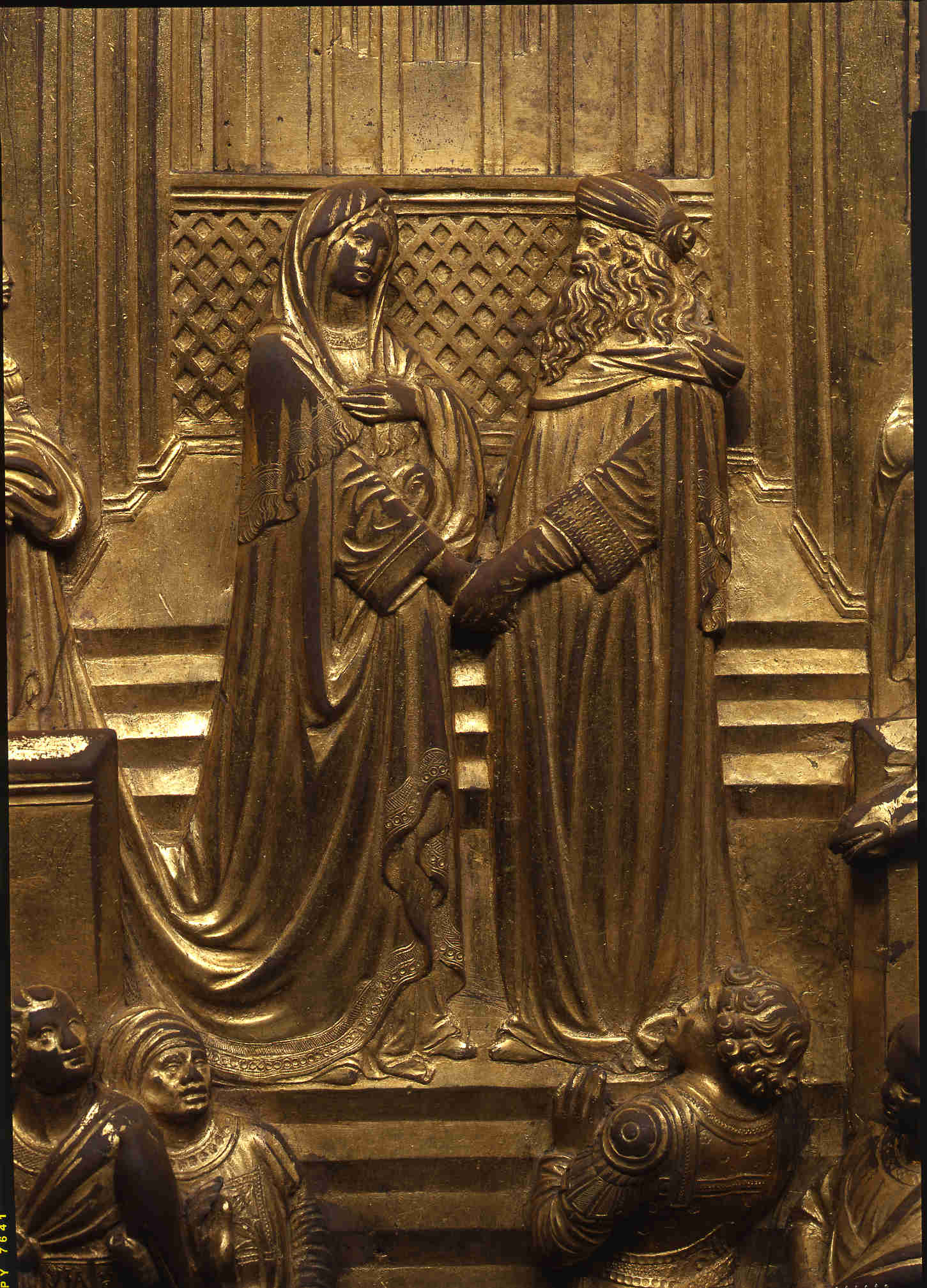
Gates of Paradise. Particular of the tile stories of Solomon. Courtesy of Opera di Santa Maria del Fiore.
